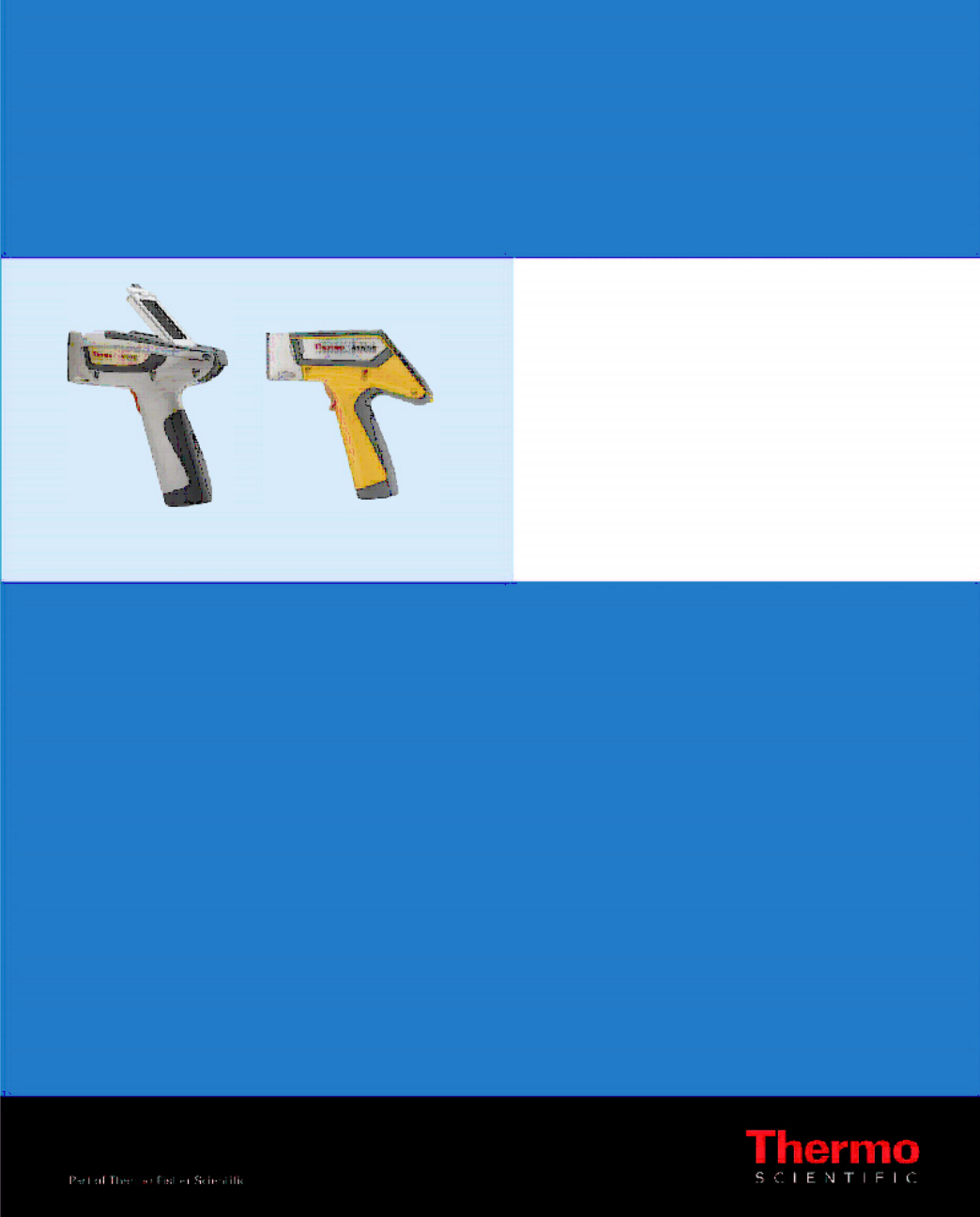Thermo Scientific XL2 RFID Module User Manual
Thermo Scientific, Inc. RFID Module
Contents
- 1. User Manual (Statements).pdf
- 2. User Manual.pdf
User Manual (Statements).pdf

Thermo Scientific
Niton XL2 and XL3
Communications
Addendum
Supplement for Resource Guides v 8.2.1
Part Number 112-00058
© 2014 Thermo Fisher Scientific Inc. All rights reserved.
Defender is a registered trademark of Thermo Fisher Scientific Inc. in the United States.
Thermo Fisher Scientific Inc. provides this document to its customers with a product purchase to
use in the product operation. This document is copyright protected and any reproduction of the
whole or any part of this document is strictly prohibited, except with the written authorization of
Thermo Fisher Scientific Inc.
The contents of this document are subject to change without notice. All technical information in
this document is for reference purposes only. System configurations and specifications in this
document supersede all previous information received by the purchaser.
Thermo Fisher Scientific Inc. makes no representations that this document is complete,
accurate or error-free and assumes no responsibility and will not be liable for any errors,
omissions, damage or loss that might result from any use of this document, even if the
information in the document is followed properly.
This document is not part of any sales contract between Thermo Fisher Scientific Inc. and a
purchaser. This document shall in no way govern or modify any Terms and Conditions of Sale,
which Terms and Conditions of Sale shall govern all conflicting information between the two
documents.

Thermo Scientific 1
Radio Frequency Communications in the
Niton XL2 and XL3 Analyzers
Radio Frequency Communications
This Addendum covers radio frequency communications using the Thermo
Scientific Niton XL2 and Niton XL3 XRF Analyzers. These additions will be
rolled into subsequent Resource Guides, so this Addendum is considered
supplemental only to the current version 8.2.1 Resource Guides for both
analyzers.
Changes or modifications not expressly approved by Thermo Fisher Scientific
could void the user's authority to operate the equipment.
This equipment has been tested and found to comply with the limits for a
Class B digital device, pursuant to Part 15 of the FCC Rules. These limits are
designed to provide reasonable protection against harmful interference in a
residential installation. This equipment generates, uses and can radiate radio
frequency energy and, if not installed and used in accordance with the
instructions, may cause harmful interference to radio communications.
However, there is no guarantee that interference will not occur in a particular
installation. If this equipment does cause harmful interference to radio or
television reception, which can be determined by turning the equipment off
and on, the user is encouraged to try to correct the interference by one of the
following measures:
• Reorient or relocate the receiving antenna.
• Increase the separation between the equipment and receiver.
• Connect the equipment into an outlet on a circuit different from that to
which the receiver is connected.
• Consult the dealer or an experienced radio/TV technician for help.
Radio Frequency Communications on page 1
2 Thermo Scientific
Radio Frequency Communications in the Niton XL2 and XL3 Analyzers
There are no detachable antennas.
The user has no control over the RF power settings of the equipment. All
possible adjustments are pre-set at the factory.
WARNING! - FCC and IC Radiation Exposure Statement:
• This equipment complies with FCC's and IC's RF radiation exposure
limits set forth for an uncontrolled environment under the following
conditions:
• 1. This equipment should be installed and operated such that a
minimum separation distance of 20cm is maintained between the
radiator (antenna) & user's/nearby person's body at all times.
• 2. This transmitter must not be co-located or operating in conjunction
with any other antenna or transmitter."
